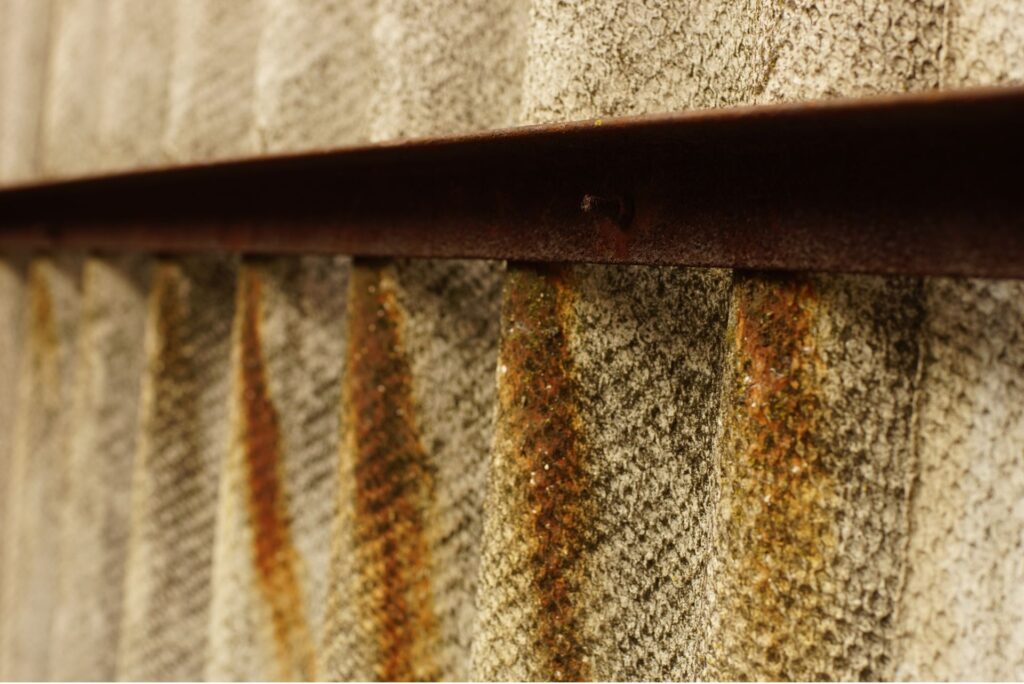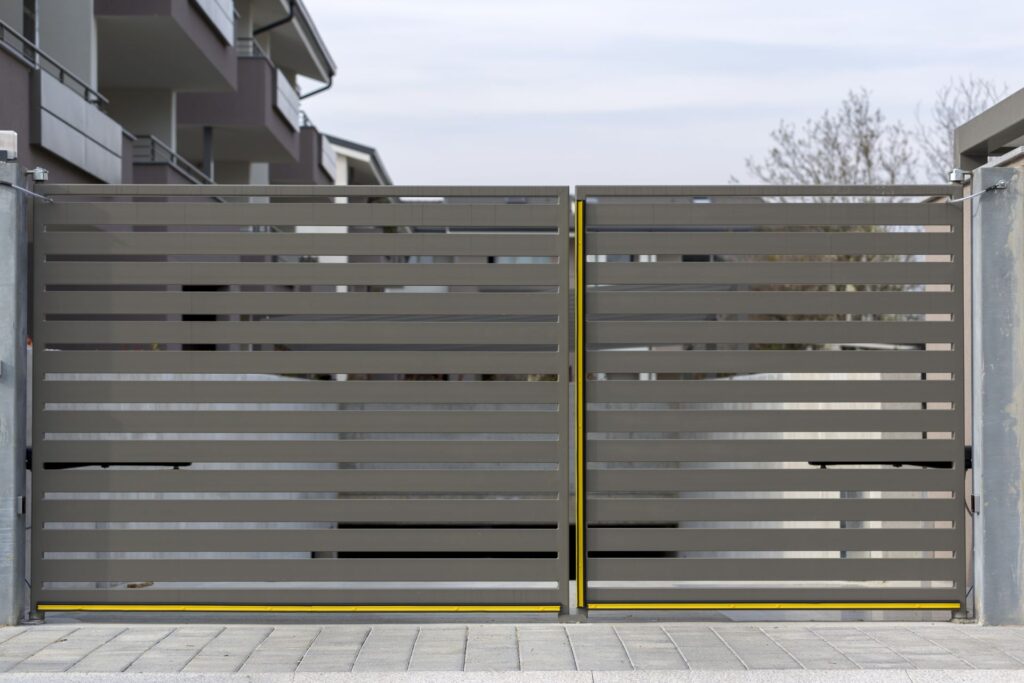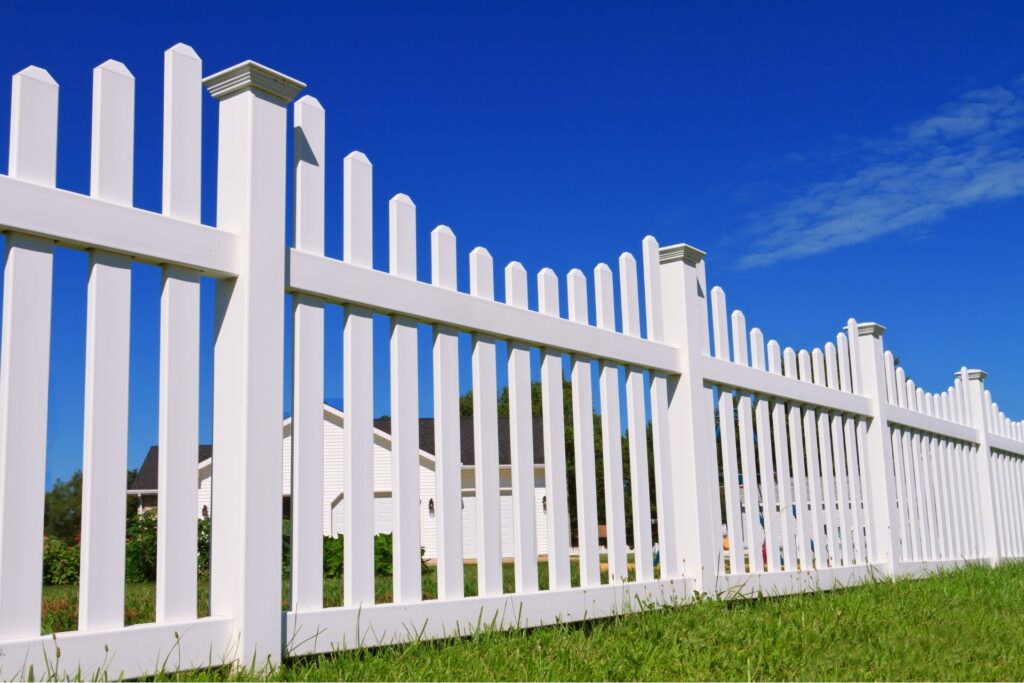Welcome to our comprehensive guide on asbestos fence removal prices. If your home is surrounded by a fence installed before the late 20th century, there’s a possibility it contains asbestos. Known for its durability and fire-resistant properties, asbestos was a popular construction material. However, its health risks have turned this once celebrated material into a major concern for homeowners. Let’s dive into everything you need to know about safely removing your asbestos fence and the factors that influence the cost.
Removing an asbestos fence in New Zealand usually costs between $1,500 and $3,000. The price per square meter can be from $50 to $150. The total cost depends on how big and long the fence is, the condition of the asbestos, how easy it is to get to the site, local rules for getting rid of asbestos, and what needs to be done to remove it safely. It’s important to get a professional to check it first to make sure the job is done safely and follows the law. Make sure to use certified experts for the removal.
Table of Contents
What Is Asbestos, And Why Is It In Your Fence?
Asbestos, a term that evokes caution for many, is a naturally occurring mineral that found its way into numerous construction materials, including fencing, throughout the 20th century. Understanding the history of asbestos, its properties, the risks it poses, and the imperative of its removal is crucial for ensuring our environments are safe and healthy.
Brief History of Asbestos Use in Construction/Fencing
Asbestos became a staple in construction materials from the late 1800s due to its admirable properties. Its resistance to fire, heat, chemical damage, and electricity made it an ideal additive in a variety of building materials, including roofing, insulation, and indeed, fencing. Fences containing asbestos were lauded for their durability and fire-resistant qualities, making them a common sight in buildings and homes up until the late 20th century.
Properties of Asbestos That Made it Popular
The popularity of asbestos can be attributed to its unique fibrous nature, which allows it to be woven into fabrics or mixed with cement. Asbestos fibers are strong yet flexible, and their thermal resistance properties are unparalleled. These characteristics made asbestos-containing materials (ACMs) highly sought after for both residential and commercial construction, providing what was thought to be an effective and durable solution for building needs, including fencing.
Risks Associated with Asbestos Exposure
However, the widespread use of asbestos came to a dramatic halt when its health risks became undeniable. Asbestos fibers, when inhaled, can cause serious health issues, including asbestosis, lung cancer, and mesothelioma—a rare and aggressive form of cancer primarily affecting the lining of the lungs or abdomen. These health risks are particularly alarming because symptoms can take decades to appear after exposure. The realization of these severe health implications led to strict regulations on the use of asbestos and efforts to remove it from environments where people live, work, and play.
Transition to Why Removal is Critical for Health and Safety
Understanding the dangers associated with asbestos exposure highlights the critical nature of its removal from all structures, including fences. Asbestos-containing fences pose a risk not only because of their potential to release fibers into the air over time but also during incidents that may cause the fence to break or crumble, such as severe weather events or accidental damage. Removing these materials safely and effectively requires professional expertise to ensure that asbestos fibers are not released into the air during the removal process.
In conclusion, while asbestos was once celebrated for its beneficial properties in construction, the significant health risks it poses cannot be overstated. The presence of asbestos in fences and other building materials is a lingering concern, emphasizing the importance of professional removal to protect public health and safety. By addressing this issue head-on, we can ensure a safer environment for everyone, free from the hidden dangers of asbestos exposure.
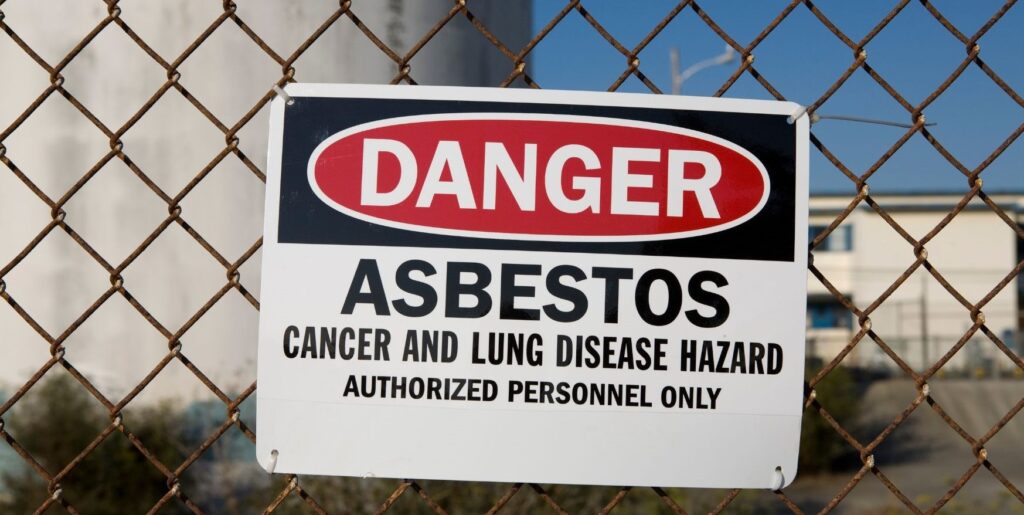
The Dangers Of Asbestos In Fencing
When it comes to home maintenance and renovations, the dangers lurking within older building materials are not always immediately apparent. A prime example is the risk associated with asbestos in fencing. This once-popular construction material, hailed for its durability and fire-resistant properties, is now known for its significant health and environmental risks. This comprehensive guide aims to shed light on the hidden dangers of asbestos in fencing, detailing the health risks, environmental implications, and legal considerations of improper handling.
Understanding Asbestos and Its Use in Fencing
Asbestos is a group of naturally occurring fibrous minerals that were extensively used in building materials, including fencing, until the late 20th century. Its strength, resistance to heat, and affordability made it a material of choice for a wide range of construction purposes. However, it was later discovered that asbestos poses serious health risks when its fibers become airborne and are inhaled.
Health Risks Associated with Asbestos Exposure
The primary concern with asbestos in fencing comes from the potential release of asbestos fibers into the air, particularly during demolition, renovations, or when the fence is damaged. Inhalation of these fibers can lead to severe respiratory conditions, including:
Mesothelioma: A rare and aggressive form of cancer that primarily affects the lining of the lungs, but can also target the abdomen and other organs. Mesothelioma is closely linked to asbestos exposure, with symptoms often appearing decades after the initial inhalation of asbestos fibers.
Asbestosis: This chronic lung condition is caused by the inhalation of asbestos fibers, leading to lung scarring and stiffness. Asbestosis symptoms include shortness of breath, persistent cough, and in severe cases, heart failure.
Lung Cancer: Asbestos exposure significantly increases the risk of developing lung cancer, with the risk compounded for smokers.
Environmental Risks of Asbestos in Fencing
Asbestos in fencing not only poses a risk to human health but also to the environment. When asbestos-containing materials break down, they can release fibers into the soil and air, posing a risk to wildlife and creating long-term contamination issues. Proper management and disposal of asbestos materials are crucial to preventing environmental contamination.
Legal Implications of Improper Handling
The discovery of asbestos in fencing carries significant legal implications for homeowners and contractors. Many countries have strict regulations regarding the handling, removal, and disposal of asbestos-containing materials. Failure to comply with these regulations can result in hefty fines, legal action, and potential health risks to workers and residents. It’s essential to engage licensed professionals for the assessment, removal, and disposal of asbestos-containing fencing to ensure compliance with local and national safety standards.
The presence of asbestos in fencing is a serious concern that requires awareness and appropriate action. Understanding the health risks, environmental impact, and legal implications of asbestos can guide homeowners and contractors in managing and mitigating the dangers effectively. Engaging with experts and adhering to safety regulations are critical steps in addressing the challenges posed by asbestos in fencing, protecting health, and ensuring a safer environment for all.
By fostering a comprehensive understanding of these risks and following best practices for asbestos management, we can collectively work towards a safer, asbestos-free future.

Recognizing Asbestos In Your Fence
In today’s post, we’re diving deep into an essential topic for homeowners and property managers alike: recognizing asbestos in fencing. Asbestos, once a popular building material due to its fire-resistant properties, has been found to pose serious health risks, including lung cancer, mesothelioma, and asbestosis. Consequently, identifying the presence of asbestos in older structures, including fences, is crucial for ensuring a safe living environment. Let’s explore how you can spot asbestos in your fencing without disturbing it and understand when it’s time to call in the professionals.
What Does Asbestos Fencing Look Like?
Asbestos fences often hail from an era when the use of asbestos cement was commonplace (from the 1950s to the 1980s). These fences can resemble traditional cement or fibro fencing but contain asbestos fibers to add strength and fire resistance. Typically, they have a somewhat muted, grey appearance and may display a slightly corrugated or flat surface. Over time, asbestos fences may show signs of wear such as cracking, weathering, or moss/lichen growth, which can make them harder to distinguish from non-asbestos materials.
Tips for Identifying Asbestos in Fencing
Consider the Age of Your Fence: If your fence was installed before the 1990s, there’s a higher chance it may contain asbestos. Knowing the installation date can be a significant first clue.
Examine the Surface and Texture: Asbestos-containing fences usually have a unique texture that’s different from pure wood or modern fibro products. Look for a slightly rough, “pebbled” surface or the presence of small, visible fibers.
Check for Wear and Damage: Asbestos fences may degrade in a distinctive manner. Look for signs of aging, such as brittleness or a tendency to crumble when prodded with a tool. Remember, it’s crucial not to disturb the material, as this can release harmful asbestos fibers into the air.
Look for Manufacturer Marks or Labels: Some older fencing materials might have manufacturer’s stamps or labels indicating their composition. While these may be difficult to find, they can provide definitive evidence of asbestos.
When to Call a Professional for Assessment
If you suspect your fence may contain asbestos, it’s vital not to disturb it. Disturbing asbestos-containing materials can release dangerous fibers into the air, posing health risks to you and those around you. Here’s when you should consider calling in a professional:
Uncertainty About Material: If you’re unsure about the material after performing a visual inspection.
Visible Damage or Wear: If the fence shows significant damage or wear and might pose an immediate risk.
Planning Renovations or Removal: Before undertaking any work that might disturb the fence.
Professionals equipped to handle asbestos will conduct a thorough assessment and advise on the best course of action, whether it be encapsulation, removal, or other forms of management to minimize exposure risks.
Recognizing asbestos in your fence is a critical step in maintaining a safe and healthy property. By understanding what asbestos fencing looks like and knowing the tips for identification, you can take proactive steps to manage this risk. However, when in doubt, always err on the side of caution and consult with an asbestos abatement professional to ensure the safety of everyone involved. By educating yourself and taking the necessary precautions, you can effectively manage asbestos risks and contribute to a safer environment for all. Stay informed, stay safe, and remember—it’s always better to be safe than sorry when it comes to asbestos.

The Asbestos Fence Removal Process
This section delves into the asbestos fence removal process, emphasizing the importance of professional handling, the dangers of DIY approaches, and the legal and safety standards governing this hazardous task. Whether you’re a homeowner or involved in property management, understanding the complexities of asbestos removal is crucial for ensuring health and compliance with regulations.
Professional Asbestos Fence Removal Process: A Step-by-Step Overview
Professional asbestos removal is a meticulous process that ensures the safe extraction of asbestos-containing materials (ACMs) from your property. Experts in the field follow a stringent procedure to minimize the release of asbestos fibers into the air, thereby protecting both the environment and public health. The process typically involves:
Initial Assessment: Professionals conduct a thorough inspection to confirm the presence of asbestos and assess the extent of removal needed.
Planning and Permits: A detailed plan is devised, including the acquisition of necessary permits from local health and safety authorities.
Preparation of the Site: The area is secured and clearly marked to prevent unauthorized access. Specialized equipment and signs are set up to ensure safety.
Removal Process: Trained technicians wearing protective gear carefully remove the asbestos material, employing techniques to minimize fiber release.
Disposal: Asbestos waste is securely bagged, labeled, and transported to designated disposal sites, adhering to legal requirements.
Site Clean-Up and Air Monitoring: After removal, the site is cleaned and air quality is monitored to ensure it’s safe for re-entry.
DIY Removal: Understanding the Risks
While some homeowners might consider removing asbestos fences themselves to save costs, this approach is strongly discouraged due to significant health risks. Asbestos fibers, when inhaled, can cause serious respiratory issues, including asbestosis, lung cancer, and mesothelioma. Without proper training, protective equipment, and decontamination facilities, DIY removal poses a direct threat to the individual performing the task, their family, and the broader community.
Legal and Safety Requirements for Asbestos Fence Removal and Disposal
The removal and disposal of asbestos are governed by strict regulations to protect public health and the environment. These requirements vary by jurisdiction but generally include:
Certification and Licensing: Only licensed professionals with specific training in asbestos removal are legally permitted to undertake the task.
Notification: Local authorities must be notified in advance of any asbestos removal project.
Safety Protocols: Removal procedures must adhere to safety protocols, including the use of protective gear and containment measures to prevent asbestos fiber dispersion.
Waste Management: Asbestos waste must be disposed of at approved facilities, following strict guidelines for transportation and disposal to prevent contamination.
The removal of asbestos fences is a complex process that requires professional expertise and adherence to legal and safety protocols. While the temptation to undertake this task as a DIY project might exist, the health risks and legal implications make professional intervention the safest and most responsible choice. Homeowners and property managers are urged to consult with certified asbestos removal specialists to ensure their property is safely and effectively cleared of this hazardous material, safeguarding the health of their families and the community at large.
By understanding the critical aspects of the asbestos fence removal process, individuals can make informed decisions, ensuring compliance with regulations and prioritizing health and safety above all.
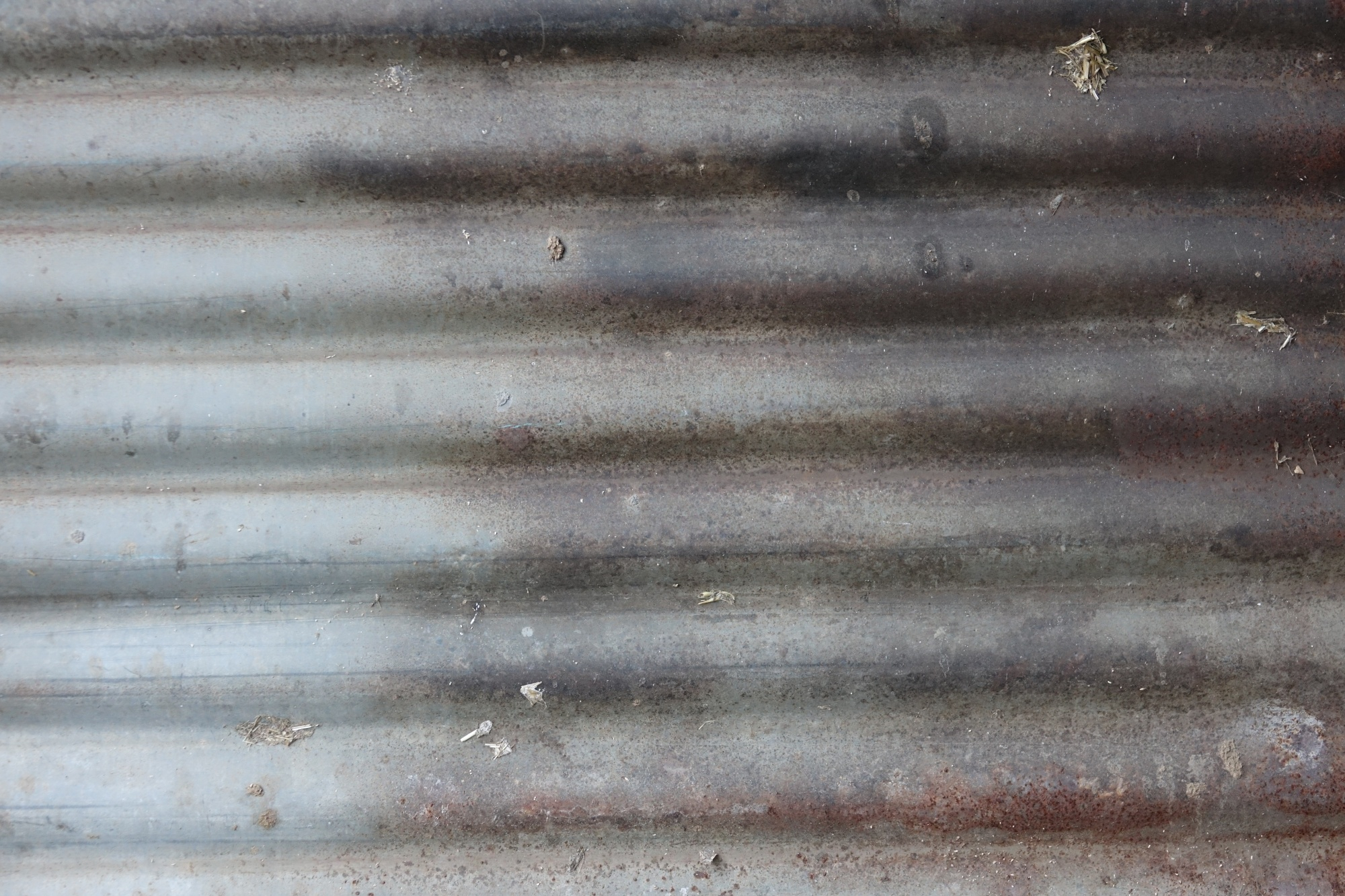
Factors Influencing Asbestos Fence Removal Price
When discussing the cost of removing an asbestos fence, several factors come into play, significantly affecting the final price you might pay. Below is a detailed explanation of these elements, crafted to ensure it reads naturally, and resonates with real human experiences and inquiries. The aim is to offer insights that not only educate but also guide you through the process of asbestos fence removal, ensuring you’re well-informed to make decisions best suited for your situation.
Size and Extent of Asbestos Fencing
The initial, and often most significant, factor influencing the cost is the size and extent of the asbestos fencing involved. Larger areas requiring more materials and labor will naturally lead to higher costs. This isn’t just a matter of linear measurements; the complexity of the fence layout and the total surface area covered play crucial roles. A straightforward fence line might be less expensive to remove per unit length compared to a complex layout that requires intricate work around corners or obstacles.
Accessibility and Location of the Property
The location of your property and the accessibility of the asbestos fence can also impact the removal price. Properties located in remote or hard-to-access areas might incur additional transportation costs for the removal team and their equipment. Furthermore, if the fence is situated in a challenging location that hinders easy access, such as a steep hill or a tightly packed urban area, this can increase the labor intensity and, consequently, the cost.
Local Regulations and Disposal Fees
Asbestos removal is heavily regulated due to its health risks, with regulations varying significantly from one region to another. These local regulations can influence the cost, as stricter guidelines may necessitate more rigorous removal, containment, and disposal processes, each adding to the overall expense. Additionally, disposal fees for hazardous materials like asbestos can vary widely by location, further affecting the total cost.
Labor and Equipment Costs
The cost of labor and equipment for asbestos fence removal is a pivotal factor. Specialized equipment is often required to safely remove and dispose of asbestos, including protective gear for the workers, air filters, and secure containment units for the removed asbestos. The labor cost, meanwhile, is influenced by the complexity of the job and the level of expertise required. This leads us to the next factor.
The Impact of Hiring Certified Professionals
Hiring certified professionals who specialize in asbestos removal is highly recommended to ensure the job is done safely and in compliance with all regulations. These professionals not only have the necessary equipment and expertise but also carry the appropriate certifications, ensuring that the removal process is conducted safely and effectively. Their services, while potentially more costly upfront, can save you from future health or legal issues associated with improper asbestos handling.
Possible Additional Costs
Finally, it’s essential to consider possible additional costs that may arise during the removal process. These can include the need for replacement fencing, which might be required immediately after the asbestos fence is removed. Additionally, if the removal process causes damage to your property’s landscaping or other external features, there might be repair costs involved. Being aware of these potential extra expenses is crucial for budgeting accurately for the project.
In conclusion, the cost of asbestos fence removal is influenced by a variety of factors, including the size and complexity of the fencing, accessibility, local regulations, labor and equipment costs, the expertise of the professionals involved, and potential additional expenses. Understanding these factors can help homeowners make informed decisions when planning for the safe removal of asbestos fencing, ensuring the health and safety of everyone involved.

How To Choose A Removal Specialist
Choosing the right removal specialist is crucial for a smooth and stress-free moving experience. Whether you’re relocating your home or office, finding a reliable removalist can make all the difference. This detailed guide will walk you through everything you need to know to select the best removal specialist for your needs, ensuring you’re well-prepared for moving day.
Qualifications and Certifications to Look For
When searching for a removal specialist, it’s important to consider their qualifications and certifications. These are indicators of a professional’s commitment to their trade and their competency in providing high-quality services. Look for removalists who are accredited by reputable industry organizations. These accreditations often require members to adhere to strict standards of operation, which can give you peace of mind knowing you’re dealing with professionals. Additionally, check if they have any specialized training in handling delicate items, furniture assembly, or packing techniques, which can be particularly useful for ensuring the safety of your belongings during the move.
Importance of Getting Multiple Quotes
Obtaining quotes from several removalists is a step you shouldn’t skip. Not only does this give you a clearer idea of the costs involved, but it also allows you to compare services, pricing, and the company’s approach to handling your move. When requesting quotes, ensure they are detailed and include all potential fees to avoid any surprise charges later on. This process helps you gauge the market rate and find a removal specialist that offers a good balance between quality service and cost-effectiveness.
Questions to Ask Before Hiring a Removalist
Before making your final decision, there are several key questions you should ask potential removalists:
- How long have they been in business?
- Do they have insurance, and what does it cover?
- Can they provide references or testimonials from previous clients?
- What measures do they take to protect furniture and premises during the move?
- How do they handle unforeseen problems or delays?
Their answers will help you assess their professionalism, reliability, and the level of customer service you can expect.
Red Flags to Watch Out for
- Awareness of potential red flags can save you from hiring an unreliable removalist. Be cautious of companies that:
- Provide significantly lower quotes than their competitors, which may indicate hidden fees or subpar service.
- Lack of a physical address or professional website, suggesting they might not be as established or reliable.
- Hesitate to provide references or proof of insurance and accreditation.
- Exhibit poor communication skills, as this can lead to misunderstandings and issues during the move.
Choosing the right removal specialist involves careful consideration of their qualifications, cost, and the service they provide. By taking the time to research and ask the right questions, you can ensure a smooth and efficient move, free from the stress and complications of dealing with unprofessional removalists. Remember, the goal is to find a trustworthy partner who can provide peace of mind during what can often be a hectic time.
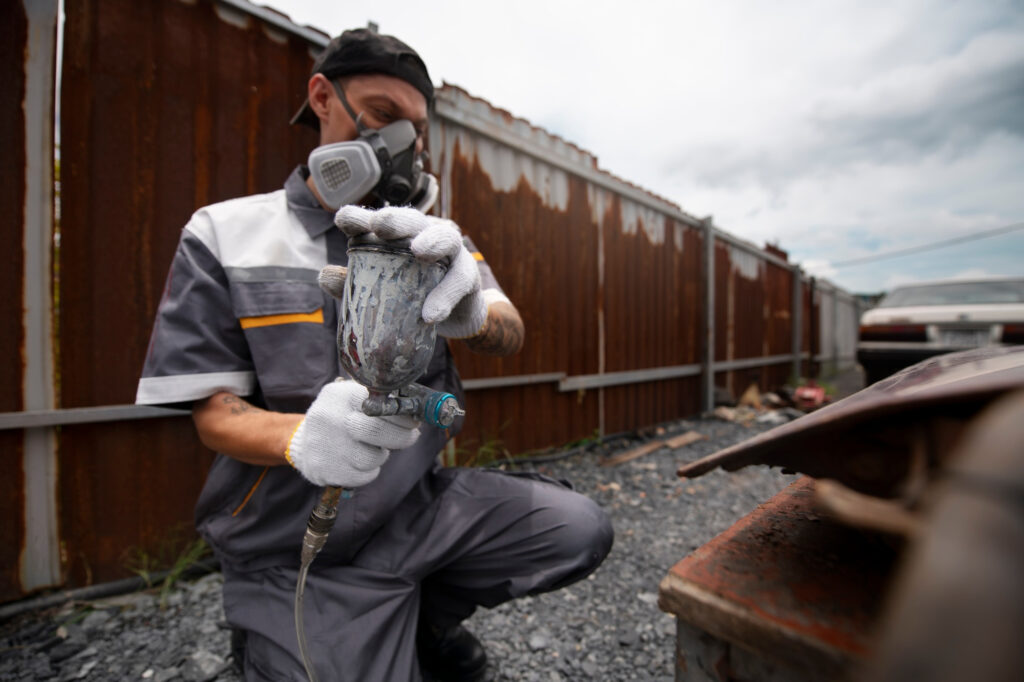
Financing Asbestos Removal
Asbestos removal is a crucial process for ensuring the safety of any property, particularly in older buildings where asbestos is commonly used in construction materials. However, navigating the financial aspects of asbestos removal can be daunting. In this comprehensive guide, we’ll explore the potential costs, insurance coverage considerations, financing options, and budgeting tips to help you effectively manage the financial side of making your space asbestos-free.
Overview of Potential Costs
The cost of asbestos removal varies widely depending on several factors, including the size of the area, the type of asbestos-containing materials (ACM), and the condition of the ACM. Generally, you can expect to pay anywhere from a few hundred to several thousand dollars. It’s essential to get multiple quotes from licensed professionals to understand the scope and cost of your specific project.
Insurance Coverage Considerations
One of the first steps in planning for asbestos removal is to check with your insurance provider. Some homeowners’ insurance policies may cover asbestos removal, especially if the need for removal is due to sudden and accidental damage. However, coverage is often limited and subject to specific terms and conditions, so it’s vital to thoroughly review your policy and speak directly with your insurance agent.
Financing Options and Assistance Programs
Fortunately, there are several financing options and assistance programs available for those facing the high costs of asbestos removal. Home equity loans or lines of credit can provide the necessary funds at relatively low-interest rates. Additionally, some local and state governments offer grants or low-interest loan programs specifically designed to help homeowners and businesses deal with asbestos removal. Researching and applying for these programs can significantly reduce the financial burden.
Tips for Budgeting the Removal
Budgeting for asbestos removal requires careful planning. Here are a few tips to help you manage the costs:
Get Multiple Estimates: Don’t settle for the first quote you receive. Getting multiple estimates can give you a better idea of the expected costs and help you find the best value.
Prioritize Safety and Compliance: While it might be tempting to cut corners to save money, ensuring the safety of the removal process and compliance with local regulations is paramount. This can prevent costly fines and health risks.
Consider Phased Removal: If the asbestos is in different areas and not posing an immediate risk, you might be able to spread out the removal costs over time by prioritizing the most critical areas first.
Set Aside a Contingency Fund: Unexpected issues can arise during the removal process. Setting aside a portion of your budget as a contingency fund can help you manage these unforeseen expenses without derailing your finances.
Financing asbestos removal doesn’t have to be a stressful ordeal. By understanding the potential costs, exploring insurance coverage, leveraging financing options and assistance programs, and employing strategic budgeting tips, you can navigate the financial challenges associated with asbestos removal. Remember, investing in asbestos removal is not just about managing costs; it’s about ensuring the safety and well-being of those who occupy the space.
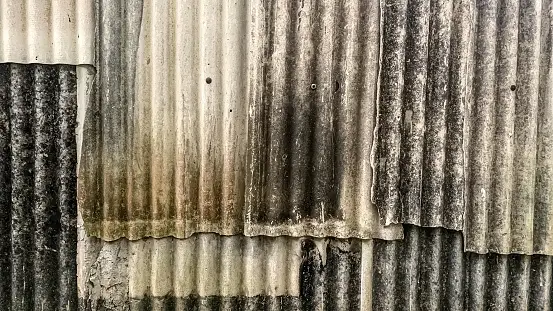
Preventative Measures And Alternatives
Creating a safe environment, especially when dealing with harmful substances like asbestos, is crucial for the health and well-being of residents and workers alike. In this guide, we will explore preventative measures and alternatives that can be taken to mitigate asbestos exposure, particularly focusing on asbestos in fencing materials, which are a common concern for many homeowners and businesses. This information aims to provide practical advice and solutions, ensuring safety and promoting a healthier living environment until professional removal can be arranged.
Preventative Measures for Asbestos Exposure
Asbestos, once a popular building material due to its fire-resistant properties, poses significant health risks when its fibers become airborne and are inhaled. If you suspect your fencing contains asbestos but immediate removal isn’t an option, consider the following steps to minimize exposure:
Limit Access: Restrict access to the area where the asbestos-containing material (ACM) is located to prevent accidental disturbance.
Wet the Material: Keeping the ACM damp (without causing damage or flooding) reduces the chance of fibers becoming airborne.
Avoid Disturbance: Do not cut, drill, or sand asbestos-containing materials, as these actions can release fibers into the air.
Professional Inspection: Have a certified asbestos professional inspect the material. They can assess the condition and advise on the best course of action.
Signage: Place warning signs around the area to inform others of the potential asbestos risk.
Alternatives to Asbestos Fencing Materials
When considering the replacement of asbestos fencing, it’s essential to look for materials that are not only safe but also durable and aesthetically pleasing. Here are some popular alternatives:
Vinyl Fencing: This offers a similar appearance to traditional wooden fences but is maintenance-free and does not deteriorate over time.
Composite Fencing: Made from a mixture of wood and plastic, composite fencing provides the look of wood without the risk of rot or termite damage.
Metal Fencing: Materials like aluminum and steel are durable and offer a modern look. They are also fire-resistant and require minimal maintenance.
Bamboo Fencing: An eco-friendly option that provides privacy and a natural aesthetic. Bamboo is fast-growing, making it a sustainable choice.
Tips for Safe Living Until Removal Can Be Completed
Living with asbestos-containing materials requires careful management to ensure safety. Here are some tips to follow until professional removal can be safely completed:
Regular Monitoring: Regularly check the condition of the asbestos-containing material for any signs of wear or damage.
Educate Yourself and Others: Understanding the risks and proper handling of asbestos can significantly reduce exposure.
Plan for Professional Removal: Asbestos removal is not a DIY job. Research and plan for professional removal by certified experts to ensure it’s done safely and legally.
Emergency Plan: Have a plan in place in case of accidental disturbance, including sealing off the area and contacting asbestos removal professionals immediately.
Implementing these preventative measures and considering alternatives can significantly reduce the risks associated with asbestos exposure. Always prioritize safety and consult with professionals for advice and removal services to ensure a healthy and safe environment.
By taking proactive steps and making informed decisions, homeowners and businesses can manage asbestos hazards effectively until they can be fully addressed. Remember, the health and safety of individuals should always be the top priority, and taking the necessary precautions can make a significant difference in promoting a safe and healthy living or working environment.

FAQs: About Asbestos Fence Removal And Pricing
How can I tell if my fence contains asbestos?
Identifying asbestos in fences without professional testing can be challenging. Asbestos-containing fences are often corrugated, similar to certain roofing materials, and were commonly installed before the 1990s. If your fence is old or you’re unsure about its composition, it’s safest to consult a professional for an assessment.
Why is it dangerous to remove an asbestos fence by myself?
DIY removal of asbestos fences poses significant health risks due to the potential release of asbestos fibers into the air, which can lead to serious lung diseases if inhaled. Additionally, improper handling and disposal of asbestos materials can lead to environmental contamination and legal penalties.
What does the asbestos fence removal process involve?
The process generally involves sealing off the area, wearing protective gear, carefully dismantling the fence to minimize disturbance, securely packaging the asbestos materials, and properly disposing of them at a designated facility. This process is carried out by certified professionals to ensure safety and compliance with regulations.
How much does it cost to remove an asbestos fence?
The cost can vary widely depending on factors such as the size and accessibility of the fence, local disposal fees, labor costs, and any additional landscaping or fence replacement needed post-removal. Prices can range from a few hundred to several thousand dollars.
Are there any health risks with leaving an asbestos fence undisturbed?
If an asbestos fence is in good condition and not disturbed, it poses minimal health risks. Problems arise when the fence is damaged, or deteriorating, or if there are plans to disturb it through removal or renovation, as this can release harmful asbestos fibers.
What should I do if I suspect my fence has asbestos?
Do not attempt to touch, disturb, or remove the fence. Contact a professional asbestos removal service to assess the material and determine the best course of action.
Can asbestos fence removal be covered by insurance?
It depends on your insurance policy. Some homeowners’ insurance policies may cover asbestos removal, especially if it’s necessary for safety reasons. Check with your insurance provider for specific coverage details.
How do I choose the right professional for asbestos fence removal?
Look for a licensed and experienced asbestos removal contractor with positive reviews. They should provide a clear removal plan, including safety measures and disposal methods, and offer a detailed quote.
What happens to the asbestos material after removal?
Asbestos materials must be disposed of according to local and federal regulations, which usually involves transporting the material to a certified hazardous waste facility.
Are there safer alternatives to asbestos for fencing materials?
Yes, there are many non-asbestos fencing options available, including wood, vinyl, metal, and composite materials. These alternatives provide durability and aesthetic appeal without the health risks associated with asbestos.
Conclusion
In summary, the removal of asbestos fencing is an essential step toward safeguarding the health and safety of homeowners and their families. Asbestos, once lauded for its durability and fire resistance, is now known for its severe health risks, including lung cancer and mesothelioma, making the removal of asbestos-containing materials, such as fencing, paramount. Planning for its removal requires understanding the process and costs involved, emphasizing the importance of hiring certified professionals for safe and effective asbestos elimination.
Though the expense may seem daunting, it is an invaluable investment in the well-being of your loved ones and the longevity of your property. We urge homeowners with asbestos fencing to consult with certified specialists to take the necessary steps toward a safer home environment. This action is not just a maintenance task but a critical move for the health and safety of your family, underscoring the importance of proactive measures for a healthier, safer future.
